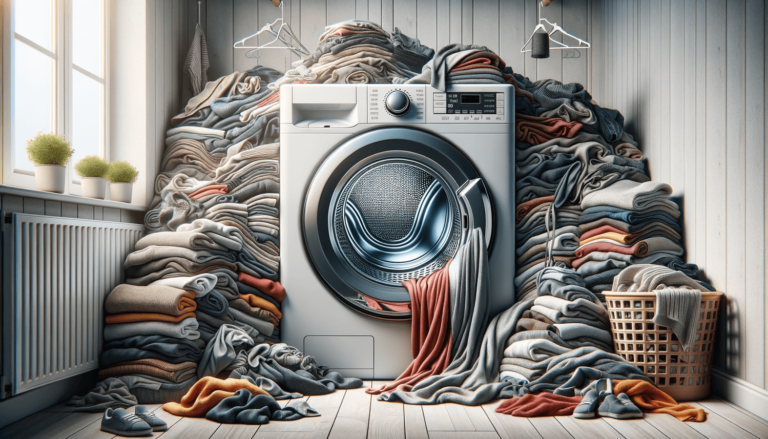

Written by: Settings King
Last updated:

Pros: Time-saving, convenience, fewer wrinkles, softer fabrics, reduced allergen levels.
Cons: Energy consumption, potential fabric damage, shrinkage, environmental impact, installation and maintenance costs.
Choose energy-saving modes like eco or low heat options while using a dryer. These dryer settings consume less energy and reduce environmental impact.
Use this setting for mixed fabrics to minimize wrinkles and maintain fabric quality.
This setting is perfect for fragile fabrics, providing gentle heat to prevent damage.
Opt for dryers with moisture sensor technology to preserve fabric integrity and minimize energy costs.
Understanding the pros and cons of using a dryer can help you make an informed decision when purchasing or using this appliance. Settings King provides expert advice on technology settings to help you get the most out of your appliances.
Time-saving: Dryers quickly evaporate moisture from clothes, reducing drying times compared to air-drying.
Convenience: Dryers are particularly useful during unfavorable weather conditions or when living in small spaces with limited air-drying options.
Fewer wrinkles: Using the correct dryer settings can result in fewer wrinkles and creases, making ironing easier.
Softer fabrics: Dryers can help soften fabric texture, offering comfortable, plush clothes.
Reduced allergen levels: By using a dryer, allergens like pollen and dust mites can be reduced, improving the quality of life for allergy sufferers.
Energy consumption: Dryers consume a significant amount of energy, contributing to higher utility bills.
Potential fabric damage: Incorrect dryer settings or excessive heat can lead to fabric damage and a reduced lifespan of garments.
Shrinkage: High-heat drying can cause certain fabrics to shrink, affecting the fit of clothes.
Environmental impact: The energy consumption of dryers contributes to greenhouse gas emissions, negatively impacting the environment.
Installation and maintenance costs:
To further assist you with understanding the pros, cons, and dryer settings, we’ve compiled a list of frequently asked questions related to this blog post.
Select energy-efficient settings such as eco or low heat options, use faster spin speeds in the washing machine, and ensure the lint filter is clean for optimal airflow.
The Permanent Press Cycle provides medium heat and is designed for mixed fabric types. Use it to minimize wrinkles and maintain fabric quality.
Apart from the Delicate Cycle, consider using drying racks or hanging clothes to air-dry delicate fabrics and prevent potential damage.
Use low-heat settings, avoid overloading the dryer, and allow clothes to air-dry partially before placing them in the dryer to minimize shrinkage.
Consider energy efficiency, capacity, available features (such as sensor drying technology), installation requirements, and maintenance costs.